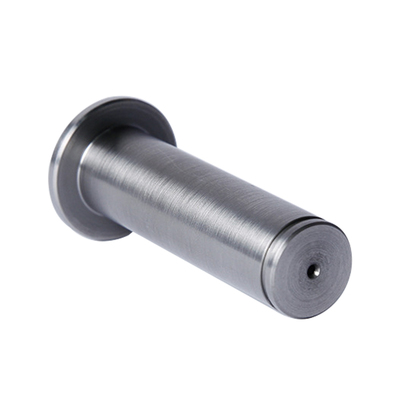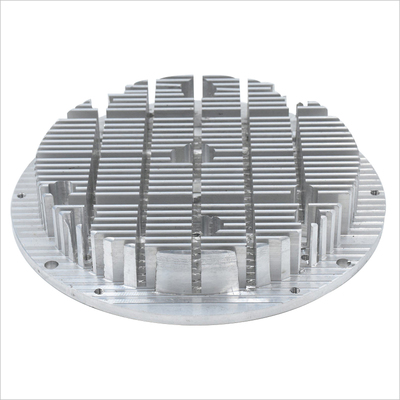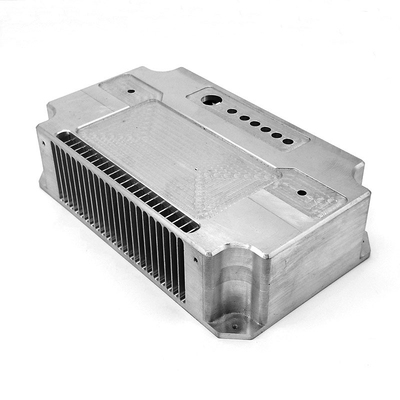Analysis of the status quo and trend of China's 3D printing technology development
Beginning in 2011, the world has started a 3D printing boom. At present, 3D printing has made positive progress in the market application of aerospace, automotive, medical and health and other fields.
The development of my country's 3D printing industry has shown continuous deepening and expanding applications. The situation. In the future, with the support of policies and technologies, my country's 3D printing industry will continue to grow. Foresight Industry Research Institute exclusively released "Foreseeing 2019: "Panoramic Atlas of China's 3D Printing Industry", an article that will show you the current status and trends of China's 3D printing development.

Additive Manufacturing (Additive Manufacturing, AM) is commonly known as 3D printing, which combines computer-aided design, material processing and forming technology, based on digital model files, and uses software and numerical control systems to combine special metal materials, non-metal materials and medical biological materials , According to the methods of extrusion, sintering, melting, light curing, spraying, etc., layer by layer, the manufacturing technology of manufacturing physical objects. Compared with the traditional processing mode of raw material removal-cutting and assembly, it is a "bottom-up" manufacturing method through the accumulation of materials, starting from nothing. This makes it possible to manufacture complex structural parts that were constrained by traditional manufacturing methods in the past and could not be realized.
Since 1986, American scientist Charles Hull obtained the SLA technology invention patent and established 3D Systems, the world's first additive manufacturing company, and the 3D printing industry has begun.
Mainly include materials, R&D manufacturing and application layer production process diversification
3D printing is an industry that integrates materials, 3D printing equipment research and development, and downstream applications. The upstream is the R&D and manufacturing layer of 3D printing materials, including auxiliary operations (3D scanners, control software, etc.), basic supporting facilities (stepping motors, chips, etc.) and printing materials (titanium alloys, metal powders, nylon materials, etc.). The midstream is the R&D and manufacturing of 3D printing equipment, and the downstream is the application field. The main application scenarios of 3D printing are in aerospace, mold casting, biomedical, automotive, etc.
3D printing equipment is mainly divided into two types: desktop level and industrial level. The desktop level is the primary and introductory stage of 3D printing technology, which can intuitively explain the process principles of 3D printing technology. Industrial-grade 3D printers are mainly divided into two types: rapid prototyping and direct product manufacturing. The two are different in terms of printing accuracy, speed, size, etc. Among them, the design of printing support and printing entity with separable parameter printing is the most important sign to distinguish between industrial machines and desktop machines.
There are many different technologies for 3D printing. The difference between them lies in the way the materials are available and the construction of different layers to create parts. Commonly used materials for 3D printing include nylon fiberglass, durable nylon materials, gypsum materials, aluminum materials, titanium alloys, stainless steel, silver-plated, gold-plated, and rubber materials.
Since my country has only introduced 3D printing technology in recent years, there is a huge gap compared with foreign countries. At present, the world has developed into metal 3D printing, polymer 3D printing, ceramic 3D printing, and biological 3D printing technology. my country is mainly in lamination and laser light. However, in recent years, my country's biological 3D printing technology has continuously achieved breakthroughs, which has promoted the clinical transformation of 3D printed medical devices and artificial tissues and organs.
The market scale continues to expand, industrial-grade products have great potential
Since the development of my country's 3D printing in 1988, it has shown a trend of continuous deepening and expanding applications. In the three years from 2015 to 2017, the scale of China's 3D printing industry has doubled, with an average annual growth rate of more than 25%. In 2017, there were more than 500 related companies in the 3D printing field in China, and the scale of the industry has reached 10 billion yuan, and the growth rate has slowed slightly to about 25%, but it is still 4 percentage points higher than the global level. In the first half of 2018, China's 3D printing industry maintained a growth rate of more than 25%, and the overall scale of 2018 is expected to reach US$1.83 billion.
3D printing has a wide range of applications, and its distribution in downstream application industries and specific use areas reflects the advantages and characteristics of this technology, as well as the limitations of this technology and the areas that need to be improved in the development process. The industries where 3D printers are in high demand include government, aerospace and defense, medical equipment, high-tech, education, and manufacturing. At present, the top three applications in the field are industrial machinery, aerospace and automotive, which account for 20.0%, 16.6% and 13.8% of the market respectively.
From the perspective of 3D printer types, in 2017, domestic desktop 3D printer shipments increased by 27%, of which about 95% were personal or desktop printers, although industrial-grade 3D printer shipments only increased by 5%. But from the perspective of sales revenue, industrial-grade 3D printers account for 80% of total revenue. Therefore, although consumer-grade equipment supports shipments, industrial-grade equipment supports the sales revenue of the entire industry. In the future, industrial-grade 3D printing equipment will be the main force of industry revenue growth.
Complex brands, international brands account for a large share
In recent years, my country's 3D printing market has shown a steady and positive trend. Therefore, more and more companies want to divide this big piece of cake and enter the field one after another. At present, about 46.9% of all 3D printing related companies in China have entered the 3D printing market after 2016. The current mainstream equipment brands in the Chinese market include Luen Thai, EOS, Huashu, Blite, 3D Systems, GE, Stratasys, HP, etc., and most of them are foreign brands.
A spatial development pattern centered on the Bohai Sea, the Yangtze River Delta, and the Pearl River Delta has taken shape
From the perspective of regional distribution, my country's 3D printing industry has an obvious agglomeration trend. At present, it has basically formed an industrial spatial development pattern with the Bohai Sea, the Yangtze River Delta and the Pearl River Delta as the core and parts of the central and western regions as the link.
Among them, the industries of Beijing, Zhejiang, Shaanxi, Hubei, Guangdong and other provinces have developed rapidly. At present, there are more than 70 companies engaged in 3D printing technology research and development, production and service in Beijing. In 2017, sales revenue was about 600 million yuan. There are more than 400 enterprises engaged in 3D business in Guangdong Province, with an output value of more than 3 billion yuan. There are more than 70 3D R&D and production companies in Shaanxi Province, with operating income of more than 500 million yuan in 2017.
Continuous technological advancement, strong research and development capabilities of universities
Although there is still a big gap between my country's 3D printing technology and foreign countries, with the rise of the industry, my country's 3D technology research based on university scientific research institutions has continued to make progress. In 2017, the number of 3D printing-related patent applications in China reached 7,402, of which South China University of Technology and Xi'an Jiaotong University ranked first and second respectively. Technological advancements have allowed my country's 3D printing solutions to continue to be implemented. On January 11, 2019, China's first polymer material viewing bridge made with 3D printing technology was officially unveiled. In the future, the "3D printing +" ecosystem will become more and more perfect.
The capital market gradually becomes rational
In recent years, with the tightening of market supervision, the acceleration of industry de-forgery and the preservation of truth, and the occurrence of a series of risk events, the popularity of 3D printing has gradually decreased, and the capital market has become more rational in the valuation of additive manufacturing companies. In 2016, there were 14 financing incidents in China's 3D printing industry, which increased to 24 in 2017, a net increase of 10 incidents. In 2018, the market tended to be calm. There were 26 financing events throughout the year, and the amount was generally small, mostly in the field of 3D printing equipment manufacturing.
Development problems still exist
Although my country's 3D printing industry has achieved considerable development, there is still a big gap in developed countries, and the problems of lagging key technologies and heavy dependence on imports for key equipment and core components are still more prominent. In addition, the development of special materials in China is lagging behind. At present, only dozens of metals such as titanium alloys and high-strength steels have been developed in China, and the performance of material formed products is generally not high. Industry leaders and materials companies such as BASF have deployed special materials in succession, making breakthroughs in a number of special materials such as new polymer composite materials, high-performance alloy materials, bioactive materials, and ceramic materials.
At present, China's 3D printing has not yet seen large-scale market applications. The reason for restricting large-scale industrialization is the slow printing speed and relatively high cost. With the advancement of technology, some areas have passed the break-even point of use. In the next few years, 3D printing is expected to usher in the most critical burst period.
Prospect analysis of China's 3D printing industry
——Industry will continue to grow rapidly
It is expected that the global 3D printing industry will still be in a period of rapid growth in the next ten years. According to IDC's forecast, the global additive manufacturing output value will reach 28.9 billion U.S. dollars in 2020; while China continues to break through technical barriers, the industry continues to grow and enter The period of large-scale industrialization.
——Industrial 3D printing will become the mainstream direction
There is a strong demand for metal 3D printing in the fields of aerospace, automotive, navigation, nuclear industry, and medical equipment, and the application side is showing a trend of rapid expansion.
——The application depth and breadth continue to expand
In the future, the application of 3D printing technology has evolved from a simple conceptual model to the direct manufacturing of functional components. For example, in the field of biomedicine, 3D printing has gradually advanced from "non-living" printing to "living" printing.
Link to this article: Analysis of the status quo and trend of China's 3D printing technology development
Reprint Statement: If there are no special instructions, all articles on this site are original. Please indicate the source for reprinting:https://www.cncmachiningptj.com
 PTJ® provides a full range of Custom manufacturer of precision fabricated parts made from aluminum parts, brass parts, bronze, copper parts, high yield alloy, low carbon steel investment casting, high carbon steel and stainless steel alloy. Capable of handling parts up to +/-0.0002 in. tolerance. Processes include cnc turning, cnc milling, laser cutting,.ISO 9001:2015 &AS-9100 certified.
PTJ® provides a full range of Custom manufacturer of precision fabricated parts made from aluminum parts, brass parts, bronze, copper parts, high yield alloy, low carbon steel investment casting, high carbon steel and stainless steel alloy. Capable of handling parts up to +/-0.0002 in. tolerance. Processes include cnc turning, cnc milling, laser cutting,.ISO 9001:2015 &AS-9100 certified.
Tell us a little about your project’s budget and expected delivery time. We will strategize with you to provide the most cost-effective services to help you reach your target,You are welcome to contact us directly ( [email protected] ) .

- 5 Axis Machining
- Cnc Milling
- Cnc Turning
- Machining Industries
- Machining Process
- Surface Treatment
- Metal Machining
- Plastic Machining
- Powder Metallurgy Mold
- Die Casting
- Parts Gallery
- Auto Metal Parts
- Machinery Parts
- LED Heatsink
- Building Parts
- Mobile Parts
- Medical Parts
- Electronic Parts
- Tailored Machining
- Bicycle Parts
- Aluminum Machining
- Titanium Machining
- Stainless Steel Machining
- Copper Machining
- Brass Machining
- Super Alloy Machining
- Peek Machining
- UHMW Machining
- Unilate Machining
- PA6 Machining
- PPS Machining
- Teflon Machining
- Inconel Machining
- Tool Steel Machining
- More Material





